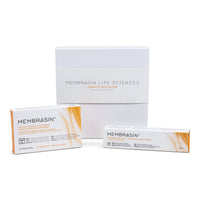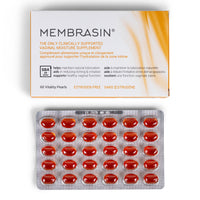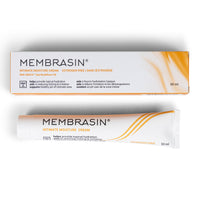The Importance of Feminine pH Balance
Feminine pH balance isn’t a widely discussed topic—but then again, many vaginal issues are still unfortunately considered taboo. But, taboo or not, we need to talk about vaginal pH balance because the pH of your vagina is part of what determines the overall health of your vagina. A quick discussion of vaginal chemistry can help clear up some myths and keep you aware of what’s going on down there.

PH Balance: What Is It?
The pH in pH balance stands for potential hydrogen, and it measures how acidic or basic a material is. The pH scale runs from 0 to 14, and a lower number means a more acidic substance, while a higher number indicates a basic substance. What a normal measurement is for your vagina depends on your age. For example, when you’re ovulating, a typical pH is between 3.8 and 4.5. But, many post-menopausal women experience an increase in pH to levels above 4.5, which can cause some problems if left untreated. Self tests are widely available if you are interested in getting some information about your vaginal health and whether or not you have a vaginal pH imbalance. Even without taking the test, you may have noticed some warning signs that something isn’t quite right down there. Changes in smell or discharge can indicate a too-acidic pH level, as can itching and burning.
What Happens If I Have a Vaginal pH Imbalance?
When your pH balance is off, your vagina becomes the perfect breeding ground for unhealthy bacteria like bacterial vaginosis or trichomoniasis. Infections like bacterial vaginosis and trichomoniasis can cause vaginitis, which leads to vaginal dryness, among other symptoms.
A high vaginal pH balance can be caused by douching, antibiotic use, menstrual periods, and unprotected sex. Understandably, some of these are unavoidable. So, how can you keep your pH balance in check? First, avoid environmental triggers as you are able. Don’t douche, and try to limit unprotected sex. Including some probiotics in your diet like yogurt can help return the pH to normal if your doctor prescribed antibiotics.

However, as you age, your vagina’s pH will naturally go up. It happens so frequently, in fact, that rising pH levels are a reliable indicator of menopause. Your body needs a certain level of estrogen in order to keep your vaginal levels acidic. So, even if you’re aging healthily, you may experience the symptoms associated with this change in pH. This is because the decrease in estrogen production may lead to atrophic vaginitis—making you more prone to yeast infections and other uncomfortable nuisances. At that point, you have a choice: live with the associated symptoms or relieve them.
How Can Membrasin® Help?
When your pH rises with menopause, you may notice vaginal symptoms like itchiness, dryness, and discomfort with sex. Other menopausal symptoms tend to dissipate over time, but vaginal dryness typically does not since the tissue has permanently changed.

Fortunately, vaginal dryness does not have to mean your sex life is over. Membrasin® offers a non-GMO, soy-free, cruelty-free, gluten-free option that works with any diet. Plus, the Intimate Moisture Cream contains lactate that helps maintain a normal pH balance. It’s also hormone-free, so it’s safe for those with cancer. Try the Membrasin® 2-Step Starter Pack, and find out why women across the country are raving about Membrasin®.



